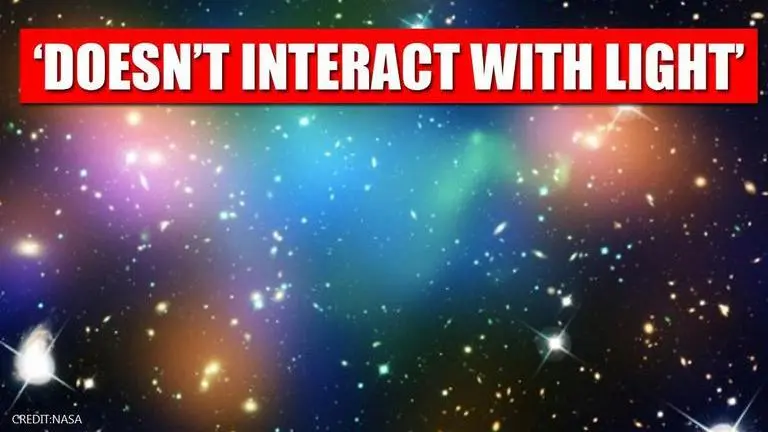Updated 8 September 2020 at 16:05 IST
Dark Matter only has 'gravitational influence' on light and other matters, scientists find
Cornell University scientists found that dark matter only has gravitational influence on light and other matters, and that’s the only way to detect it so far.
- Science News
- 3 min read

Scientists have found that what the dark matter looks like via simulation and observed that the dark matter which comprises 85 percent of all matter in the universe has no interaction with light. In a study published in Universe Today journal, citing the Cornell University research conducted by the team from Harvard & Smithsonian Center for Astrophysics, it was found that dark matter only has a gravitational influence on light and other matters, and that’s the only way to detect it so far. Scientists have found that the dark matter is not only dark but also cold due to which it clumps together, forming the seeds of galaxy clusters.
[Distribution of dark matter across the entire history of the universe as seen projected on the sky. It’s based on data collected with the European Space Agency’s Planck satellite. Credit: ESA]
[The IceCube Neutrino Detector in Antarctica has searched for WIMPs. Credit: IceCube Collaboration/NSF]
While it makes the majority of a galaxy’s mass, the cosmos dark matter forms haloes around galaxies, as per the research. Using sophisticated computer simulations, scientists found some key details about the dark matter not known previously. The team assumed dark matter consists of weakly interacting massive particles (WIMPs) with a mass of about 100 times that of a proton. WIMPs have been known as the scientific theories via which it was found that the dark matter formed halos of mass scales, from small, planet-mass haloes, to galactic haloes, to massive haloes that form around clusters of galaxies. While these halos possessed similar structures, it was noted that it diffused at edges and took denser forms in the center. It was these small scale haloes that explained to the scientists how dark matter interacted via gravitational influence on the light.
Advertisement
[Astronomer Fritz Zwicky first predicted the existence of dark matter in the 1930s following his observations of the Coma galaxy cluster. Image via zwicky-stiftung.ch.]
Advertisement
“One idea about dark matter is that when dark matter particles collide, they emit gamma radiation. Some gamma-ray observations have hinted at a gamma-ray excess coming from the center of our galaxy, which could be caused by dark matter,” the study revealed.
Halo affecting energy spectrum
It further said that the gamma radiation produced by dark matter was found to be emitted from the halos which did not directly interact with light. However, it was observed by the model that the scale of a halo was affecting the energy spectrum of the gamma rays. “Galaxies formed within relatively massive haloes as gas-cooled and condensed at their centers, but many hypotheses for the nature of dark matter imply that the halo population should extend to masses many orders of magnitude below those where galaxies can form,” scientists at Cornell university proposed in a statement. It further purported that these results “are important for predicting annihilation radiation signals from dark matter, since these should be dominated by contributions from the smallest structures.”
[The simulation shows dark matter haloes at all scales. Credit: J. Wang; S. Bose/Center for Astrophysics.]
Published By : Zaini Majeed
Published On: 8 September 2020 at 16:05 IST




